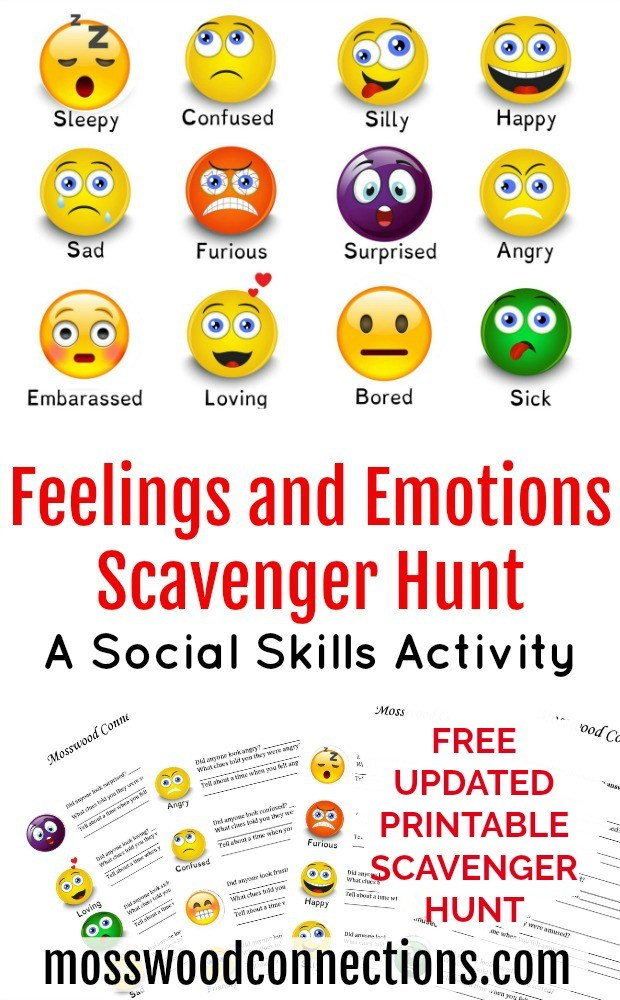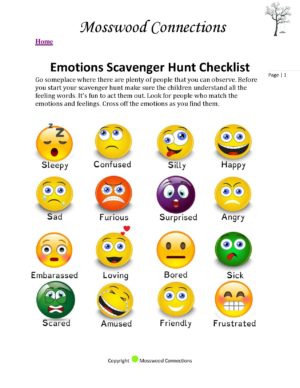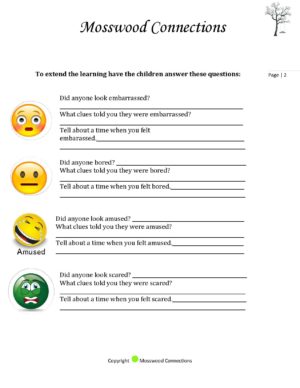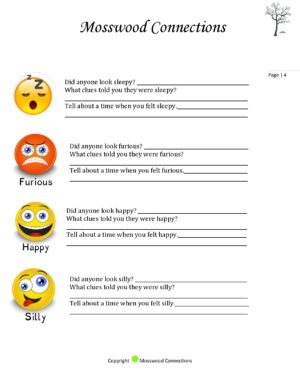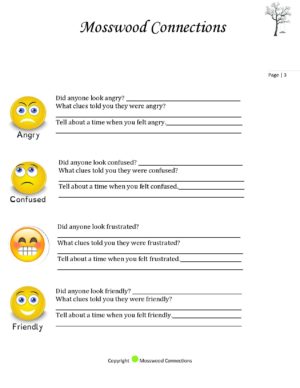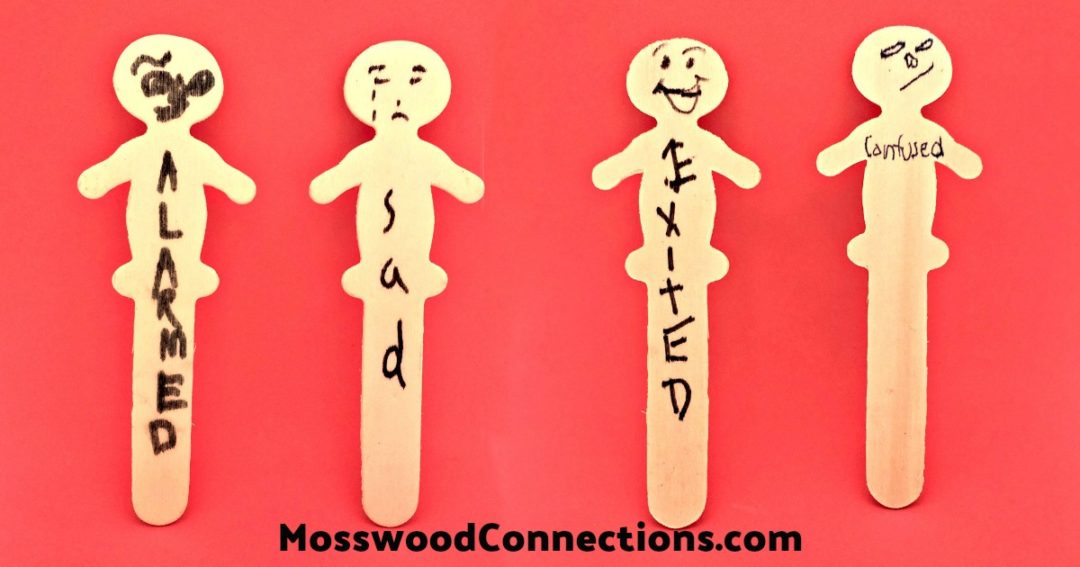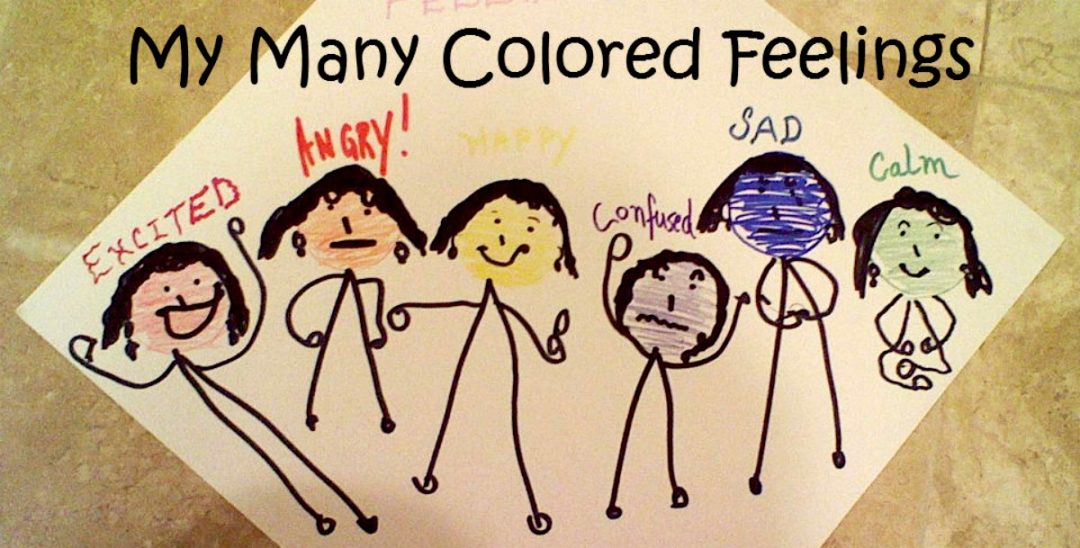Emotions Scavenger Hunt
Updated for Staying at Home
“With children, it is the joint moments of delight that build the social brain.” ~ Mariah Moser
This activity was written before we were hit with the global pandemic of the Covid-19 Coronavirus. In order to help our community we created a Mental Health Scavenger Hunt; be sure to check it out! We also came up with a way to play this emotions scavenger hunt with the family in the safety of your home. You can also turn it into an online activity for a Zoom classroom. Scroll down for the instructions below.
One of my favorite things to do with my young friends is to watch people. We do this at school, at home and when we are on outings. Quite often the children that we work with are overwhelmed in busy environments so paying attention to other people can be challenging. I have found that it is best to isolate this skill in order for the child to be able to focus. So we created an emotions scavenger hunt. I tell the child that the only thing that we will be doing is watching people; we can relax and not worry about doing anything else. Taking the time out to sit and make observations is an extremely valuable use of time and attention.
This post contains affiliate links. Please visit our disclosure page for more information.
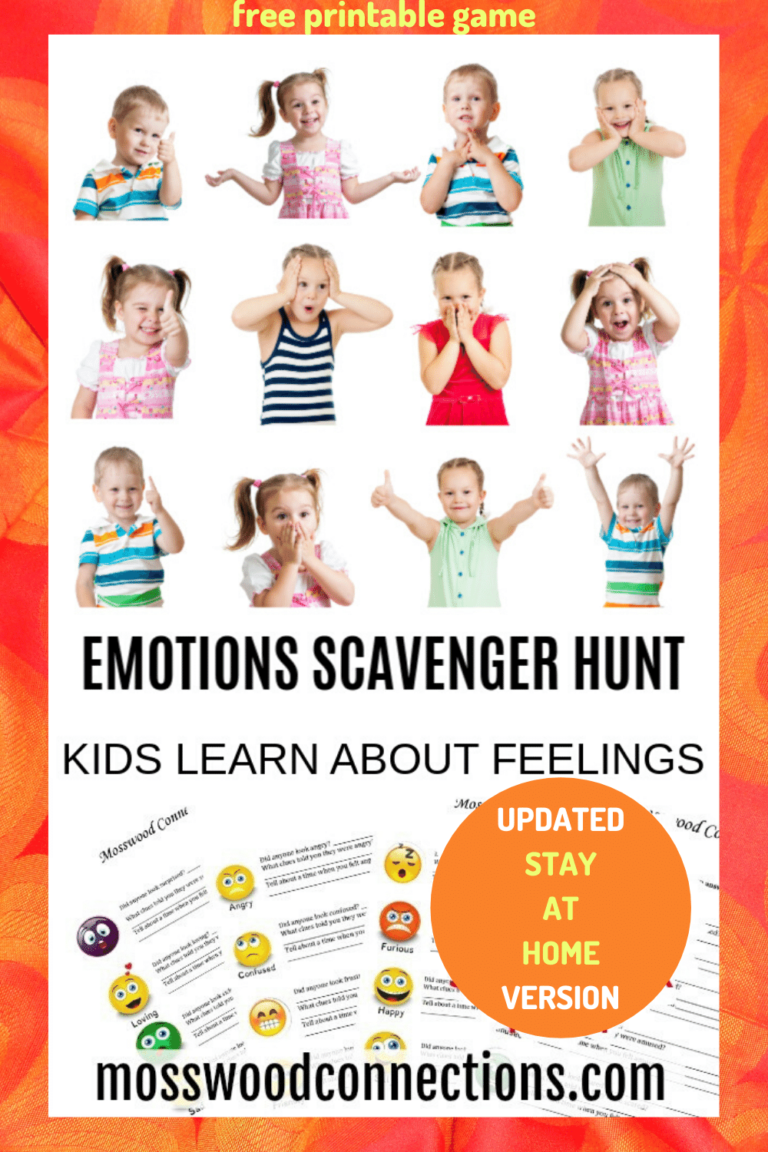
Feelings and Emotions Scavenger Hunt
This Emotions Scavenger Hunt is a great way to build emotional awareness, perspective taking, whole body listening, and social skills. By focusing on other people in a relaxed environment, it takes the pressure off by eliminating the need to interact while experiencing the various feelings that need to be explored, recognized and defined. After all, people watching has been a popular sport throughout history.
Target Skills For Your Feelings and Emotions Scavenger Hunt:
- Identifying Facial Expressions
- Social-Emotional
- Visual Scanning
Materials You Need for a Feelings and Emotions Scavenger Hunt:
Download and print the Emotions Scavenger Hunt Worksheet
Stay at Home During the Coronavirus Pandemic Feelings and Emotions Scavenger Hunt:
The original idea for this scavenger hunt was to go out where there was plenty of people and practice observing social cues. Don't worry, you can still have fun with this activity!
- Print out two copies of the first page of The Emotions Scavenger Hunt and one copy of the rest of the pdf. The first page has a variety of emojis.
- Cut out the feelings emojis. Fold in half and put in a jar.
- Each family member chooses one of the pieces of paper in the jar.
- Over the next hour everyone playing the game should pretend to have that emotion. When players notice they check off that feeling on their scavenger hunt list.
- Once someone guesses a feeling the other player should pick another feeling from the jar. Continue picking papers and acting out feelings until all the feelings have been acted out and guessed.
- Talk about what cues helped to show the feeling. Was it tone of voice, body language, facial expression?
- Whoever was able to cross off the most feelings on their list wins!
Online Classroom Version of the Emotions Scavenger Hunt:
This version will take a little preplanning (and a lot of emailing). Follow the instructions above with a few modifications:
- Email these instructions: We are going to have an Emotions Scavenger Hunt during our next virtual class. Your job is to act out the feeling that you are given. When you see someone in the class showing that feeling mark it on your Scavenger Hunt Worksheet. You must try to exhibit your emotion without disrupting whatever is going on in class at the moment. At the end of class we will talk about what everyone observed and see who recognized the most feelings.
- In your email assign a feeling to each student and attach a copy of the scavenger hunt pdf.
Instructions for an outdoor Feelings and Emotions Scavenger Hunt:
- Choose a good place to observe a variety of people. Make sure that it is not too busy or active as that may be overwhelming.
- See who can find someone that matches the emotions on the worksheet and cross them all off first.
- Ask the child why that person may feel that way.
- Ask the child when they may have felt that way.
- Act out the emotions.
- I like to extend the game by coming up with a fictional history that would fit with our observations. Maybe that older woman talking to a younger man is visiting her son. She just came back from a trip and she is telling him all about her travels. Or those two giggling teenagers are happy because they just became members of a super-hero club. You can be as silly or elaborate as you want.
- You can play in teams. Pair up groups of kids. Send them out on their scavenger hunt and then compare the observations that were made.
Enjoy More Amazing Scavenger Hunts with the Kids!
Explore with a Backyard Scavenger Hunt
CHECK OUT MORE OF OUR SOCIAL SKILLS ACTIVITIES!
